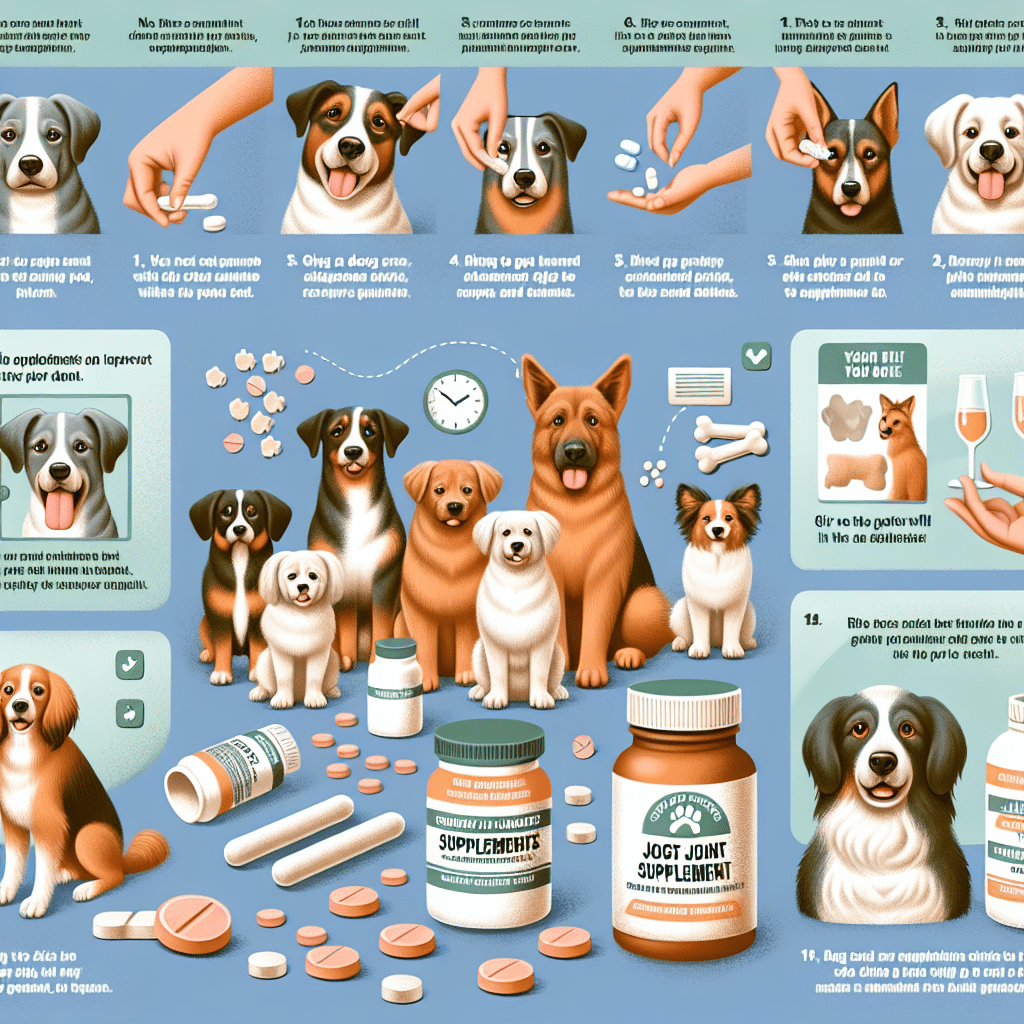Understanding Joint Supplements for Dogs
Joint supplements are increasingly popular for maintaining canine mobility, especially as dogs age. Conditions such as arthritis, hip dysplasia, and general joint wear can significantly affect a dog’s quality of life. Key ingredients found in joint supplements include glucosamine, chondroitin sulfate, MSM (Methylsulfonylmethane), and Omega-3 fatty acids. Understanding these components can help owners choose appropriate supplements for their dogs.
Timing of Administration
Daily Schedule
Establish a consistent schedule when giving supplements. Administering joint supplements at the same time each day can help dogs anticipate the routine and make it easier for owners to remember. Early morning is ideal, as it aligns with the start of the day’s activities when dogs are typically more willing to accept treats or food.
With Meals
Joint supplements can often be given with meals to enhance absorption and minimize stomach upset. Many supplements can be mixed with wet or dry food. A small amount of broth can also be used as a carrier for pill forms.
Choosing the Right Form
Chewable Tablets
Many dog owners find that chewable tablets are easy for dogs to ingest. They often come in palatable flavors that dogs enjoy, thus reducing the likelihood of refusal.
Powder Form
Powdered supplements can be sprinkled onto food, which is beneficial for picky eaters. However, this form might require watching the dog consume the entirety of their meal to ensure they receive the full dosage.
Liquid Supplements
Liquid forms can be convenient for dogs that struggle with pills or tablets. A dropper makes it easy to administer directly into the dog’s mouth or within a favorite treat.
Prescription vs. Over-the-Counter
Always consult a veterinarian to determine whether a prescription joint supplement tailored to your dog’s specific needs is necessary versus an over-the-counter option.
Proper Dosage
Follow Veterinary Recommendations
Dosage depends on a dog’s weight, age, and overall health, and should always follow the veterinarian’s advice. Under-dosing may lead to ineffective results, while overdosing can cause adverse effects.
Label Directions
Always read the label before administering supplements. Many products provide dosage guidelines based on the dog’s weight and provide clear information on how long they should be given for optimal results.
Monitoring Effects
Track Behavioral Changes
After introducing a new supplement, it’s crucial to observe any changes in mobility, energy levels, and overall behavior. Noticing a decrease in joint stiffness or an increase in activity can indicate that the supplement is working.
Look for Side Effects
Monitor for any adverse reactions, such as gastrointestinal issues or allergic reactions, especially when introducing a new supplement. If any negative symptoms occur, discontinue use and consult your veterinarian immediately.
Enhancing Acceptance
Mix with Treats
For dogs averse to supplements, consider disguising them in treats. Use soft, chewy treats that can mask the supplement’s taste. Common choices include peanut butter or cream cheese, but always opt for dog-friendly ingredients.
Pill Pockets
These are commercial treats designed specifically to hide medications and supplements. They are often flavored to entice dogs, making them a great choice for fussy eaters.
Homemade Treats
For an extra touch, consider baking homemade dog treats infused with the joint supplement powder. This way, dogs get their supplements in a form they love.
Long-term Commitment
Consistency is Key
Joint health supplements require long-term use to be effective. Establish a routine and stick to it; switching brands or methods too frequently can disrupt your dog’s progress.
Regular Veterinary Check-ups
Schedule regular visits to the veterinarian to monitor your dog’s joint health. A veterinary professional can guide supplement efficacy and when to reassess the treatment plan.
Nutrition and Lifestyle
Balanced Diet
Supporting joint health starts with nutrition. Ensure your dog has a well-rounded diet rich in essential nutrients that reinforce joint health, including healthy fats and anti-inflammatory elements.
Weight Management
Maintaining a healthy weight is vital for reducing stress on joints. Ensure your dog is at an ideal weight; if not, work with your veterinarian on a weight loss plan that may include a specialized diet.
Exercise Routine
Integrating appropriate and consistent exercise can also aid in joint health. Low-impact activities such as walking, swimming, or gentle play sessions can enhance joint function without causing stress.
Supplement Quality
Look for Quality Products
Do thorough research on any supplement brand before purchase. Choose those that use high-quality ingredients and are transparent about their sourcing and manufacturing processes.
Check for Certifications
Look for products that have been tested for safety and efficacy by third-party organizations. Certifications from industry professionals can ensure the supplement meets acceptable standards for canine health.
Situational Awareness
Age and Breed Factors
Certain breeds, especially larger ones like Labradors and German Shepherds, are predisposed to joint issues. Pay attention to the age of your dog and adjust the supplement regimen according to their needs.
Seasonal Considerations
During colder months, many dogs may experience increased stiffness in their joints. Consider ramping up joint support during these times, possibly talking to your veterinarian about adjusting dosages or adding additional supportive therapies.
Seek Professional Guidance
Veterinary Consultation
Before starting any joint supplement regimen, discuss with a veterinarian who can provide tailored recommendations based on your dog’s health history and living environment.
Possible Interactions with Medications
Joint supplements may interact with other medications your dog is taking. It’s crucial to provide all medications and supplements your dog is on to your veterinarian to avoid complications.
Emotional Support
Positive Reinforcement
Rewarding your dog after they take their supplements can create a positive association. Treats, praise, or playtime can make the process enjoyable.
Patient Approach
Understand that some dogs may take longer to adapt to a new regimen. Be patient and persistent, offering gentle encouragement and alternatives as necessary.
By incorporating these best practices when administering joint supplements, dog owners can significantly enhance their pets’ mobility, comfort, and overall quality of life. Always consult a professional, keep a close watch on your dog’s reactions, and make adjustments accordingly to ensure the best outcomes.
